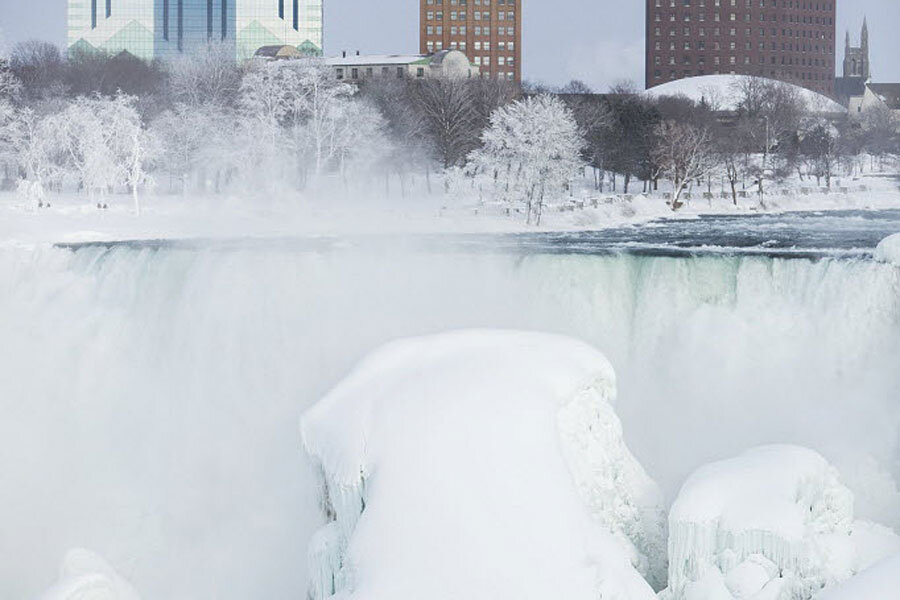Is Niagara Falls actually frozen solid?
Loading...
How cold is it?
It's so cold that, in the last couple weeks, Niagara Falls has stopped falling.
The border landmark appears to be frozen solid on the American side, drawing tourists from as far as Alabama, reports CNN.
Water is still flowing under the ice – it would take even more than this recent cold snap to freeze the 3,160 tons of water that goes over the falls every second, according to the Niagara Falls Park Service. But from the outside, it looks as though the waterfall has come to a frigid standstill.
The cold temperatures are courtesy of a "Siberian Express," a cold airmass that travels from Northern Russia, over the North Pole and down through Canada, according to the Weather Channel. Some Northeast cities have hit their lowest temperatures in a century, and others are forecasted to do so, according to the report.
The ice pack has doubled on the Great Lakes over the past week from the frigid temperatures over the last week, according to the Great Lakes Environmental Research Laboratory. All of the lakes are more than 85 percent frozen. Lake Erie is the most frozen over, at approximately 98 percent. The 85 percent mark is far from the highest recorded amount of ice, which was almost 95 percent covered in 1979, according to the research laboratory.
A complete freeze-over is fairly rare, but it nearly happened twice in 2014 during the Polar Vortexes in late February into March, according to United Press International. The only time in recorded history when Niagara Falls completely stopped was in 1848, when an ice jam further up the Niagara River caused a total freeze over, according to the Ontario Niagara Falls Park Service.
As for Niagara's current freeze, it looks like it will stay that way at least until the end of the week. The National Weather Service predicts that Friday will see a high of 4 degrees Fahrenheit, but the weekend should see temperatures nearly reach a relatively balmy 30 degrees. The one caveat is that there is a 70 and 80 percent chance of snow on Saturday and Sunday respectively, according to the service.






